| City/Town: • Centralia |
| Location Class: • Disappearing Town |
| Built: • 1899 | Abandoned: • N/A |
| Status: • Abandoned • Disappearing Town |
| Photojournalist: • Johnny Fletcher |
J.H. Hargrove is said to have been the father of Centralia, OK. In 1898 he first ascended Blue Mound, made a survey, then located the town on prairie land with the only elevations in the region, Blue Mound, Potato Hill, Leforce, and Notch Mounds surrounding the town. Hargrove lived about one half mile northwest of the town site. He was from Missouri and was believed to have named the town after Centralia, Missouri.
Hargrove started a post office at the new town site. Sam Bradfield and his son-in-law, Adam Holden, came from Bluejacket the same year and built a livery barn. Mont McGee came from Edna, Kansas, and started a grocery store, while the Mowry Hardware was started by another Edna man and managed by Bob Allen. A little later Henry Hyman opened a grocery store and Joe Lehman started a grocery, as did Messrs. Shinn and Rogers.
The first house built in town was a block north of the park, and Adam Holden’s house was built across the street in 1899.
The old Coffeyville, Kansas, to Vinita road was located about two miles northeast of Centralia. That road angled southeast across the flat prairie land. Plans called for a railroad to be built from Vinita to Centralia to Coffeyville, to be called the “Vinita and Western”. It was staked out and part of the grade built about nine miles northwest of Vinita as far as Woodley. 1906 and 1907 maps showed the line which was never completed.
The town’s height of prosperity was 1907-1915. By the latter year, it had grown in size to 750 people. There were two banks: the Farmers & Merchants headed by Frank Conkright, and the First State Bank which had originally been organized by the T.R. Montgomery family as a national bank. People who were associated with the banks in Centralia other than the above mentioned included Fred Hartley who went to a Grove bank, Bill Reynolds who later was an officer in the Vinita First National Bank, Howard Nix who was president of Vinita Production Credit Association for many years, Caney Spence who later became a Craig County official. By 1930, both Centralia banks had closed.
Over a period of prosperous years, businesses in Centralia included grocery stores operated by Henry Hyman, Joe Lehman, George B. Parks, J.F. McCoy, Everett Christian, and J.F. Clawson. There were Ben Pennington’s and Comstock’s Groceries across the street south of the park and Mrs. May’s grocery west of the park. Livery stables were operated by Sam Bradfield, Adam Holden, J.H. Hargrove, and Frank Nix. Blacksmiths included John Mowry, Mr. Haskett, and Mr. Jackson. Other businesses during the prosperous years included John Rich’s General Machine and Wagon Work, C.E. Vanbibber well driller, White’s Hardware and Undertaking, Day’s Variety Store, Tolliver’s Dry Goods, Johnston’s Millinery and General Store, and Dry Goods, Noah Harrison’s Dry Goods, C.W. Miller’s General Store. A newspaper, the Centralia Standard was established in 1902 by T.F. McCain and continued publication for several years. People who stopped overnight or for meals had the facilities of O.H. Johnson’s Hotel, Carpenter’s Hotel, and Hyman’s Hotel. “Mall Daniel had a boarding house which was a popular eating place in the 1920s”.
Early settlers were always concerned about having a good water supply. There was a well in the Centralia town square which continued to be used for many years to water stock in a trough. In 1912, it is told that Les White switched” a well in a street northeast of the center of the town which became known as the “town well”. A pump was put on it and later an engine to pump the water. It was used by all of the towns people. John Mowry had a motor at his blacksmith shop which ran an electric light plant providing power for home lights and streets. It was owned by the town and operated by Mowry.
The business district was built around a square; the only such one in Craig County. The central park contained a court house and there was a jail house behind it. Mr. Bowsman was the town marshal. The community had a library for the residents.
The town sponsored annual fall festivals which included a carnival with a merry-go-round priced at five cents a ride. The fair was held in the town square, and there was a large display of buggies and other vehicles. Luanna Mabery Monroe told that the fair festivities included horse races “in the middle of Centralia’s street”.
The first school building was a four-room frame structure in the north section of town. Early teachers included Mrs. Grace Anderson and Miss Clara Haggerman. In 1910, a four-room brick building was constructed in the southeast part of town and the early frame school was torn down. Tom W. Smith was Centralia superintendent at the time. He later became Craig County Superintendent of Schools.
The schools in those early days were heated with large coal-burning pot-bellied stoves for which the teacher was responsible. The youngsters brought half-gallon syrup buckets filled with lunches of ham, homemade light bread or biscuits left from breakfast, some-times baked sweet potatoes and fruit. They either walked to school, sometimes for miles, or some came by horseback or buggy and stabled the horses for the day at the livery barn.
In 1925 after consolidation of several outlying districts, the four-room brick school was remodeled into a ten-room building with a large gymnasium. While the new school was being constructed, classes were held in houses, churches, and in the lodge hall over the First State Bank. It was largely through the efforts of J.W. McCollum, superintendent, that consolidation was accomplished. The Centralia schools closed in 1968-69 when the district was annexed by Bluejacket and White Oak.
A fire January 11, 1907 destroyed much of the business district, including the two-story hotel run by Mrs. Ollie Carpenter. The volunteer fire department was unsuccessful in saving it. One-third of the business district of Centralia was destroyed by fire on July 22, 1917. The buildings were frame except for the two-story brick bank, and the southwest corner of the business district on the square was demolished by the blaze.
The church was the center of community social life. For some years, the congregations shared a building which the Methodists owned. By 1915, the Church of Christ, Missionary Baptist, and Primitive Baptists had their own buildings. There was also a Holiness Congregation. Members of the Primitive Baptist Church included the O.E. Odells, Charlie Christians, and the Chaney families. The Methodist congregation included the Montgomery’s: T.R., T.C. Howard and Jack, the Andy Martins, Jim Armors, Judge F.L. Haymes. The Church of Christ members included the George B. Parks, James 0. Nix, and, Legg families.
Mrs. Lizzie (Gleason) Oskison recalled that two of the first automobiles in Craig County were owned in 1910 by Centralia men: Richard Oskison, her brother-in-law, and T.C. Montgomery. “They about scared the horses to death coming down the road. The cars didn’t have doors.” There was a Camp Fire Girls organization in the town in the 1920s, with Miss Mary Bragg, teacher, as the leader. Girls included Margarite and Ruby Lee Parks, Jewell Carlock, Bernice and Opal Webb, and Leona Chaney.
The fires in downtown Centralia, the 1929 depression and the resulting closing of the banks in the town, the abandonment of the promised railroad spur from Vinita to Coffeyville which was planned to go to Centralia, and the re-routing of the Ozark Trail all contributed to the demise of Centralia.
A photograph of the Centralia City Council taken between 1897 and 1904. James Washington Lafayette Blair is in the picture, and he lived in Centralia during that period. According to a later newspaper he was city clerk and postmaster while at Centralia. Others in the photo are: J.H. Van Ausdal, Rob Allen, Les White, W.E. Ware, W.W. Clapper, and Henry Heiman. However, the photo does not identify who goes with which name. There were 43 residents in the 1980 census, as of 2010 those numbers have dwindled quite considerably to about 7 or 8 homesteads & the only original buildings left are the ones featured in the gallery.
If you wish to support our current and future work, please consider making a donation or purchasing one of our many books. Any and all donations are appreciated.
Donate to our cause Check out our books!

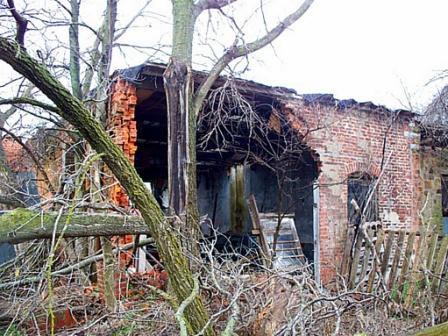




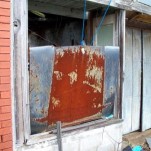
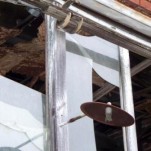

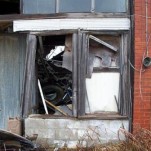
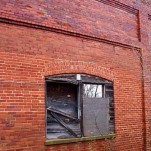
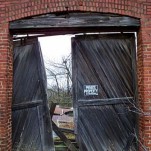


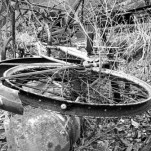

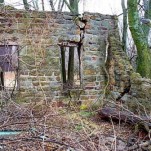

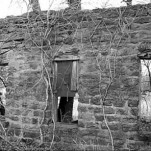

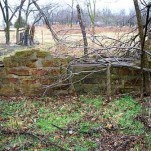




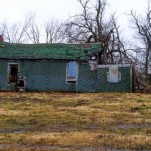
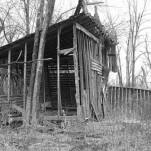
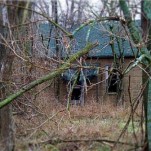
Anyone have any information on Joyce Richardson?
My mother was born in Centralia in 1944. I spent many summer vacations in Centralia visiting my grandparents and great grandparents. I have fond memories from back then, ’70’s and ’80’s. There were many names in the story that I can remember, but both my parents have passed so there no one to ask. I do have photographs of a open working garage, the post office, and other buildings. Brought back memories.
Opal Webb was my grandmother. She and her sister are mentioned in the article as members of the Camp Fire girls in the second to last paragraph.
Hi, I am Lisa King Coleman. My dad is Jim King. Your family built my grandparents house!
[…] cemeteries which have Chamberlin/Chamberlain’s & LeForce’s in them. According to this site there was even a LeForce mound in Centralia. I’ve never seen their farm house & from […]
There was a Centralia School Reunion held last Saturday at the Vinita Fairgrounds…Enjoyed every minute of it,My Dad was Caney Spence and was mentioned as one of the Centralia bank employees…My 3 brothers, Bill Spence, Jim (Sonny) Spence and Tommy Jack Spence as well as myself all attended school in Centralia..we lived south of the Trail and Kelly Hartley's Ranch…—4th generation Spence lives there now…
My mother was from the Centralia. Her father had a farm outside the town. The Wier family was made up of Franklin, Ida Olive and their 11 children. I believe there was also an uncle Ed that also lived in the area.
Does anyone know of or have any information on my family? I heard that the farm was lost during the dust bowl period (the depression).
Thank you so much for posting this. I think this really puts things into a different light. I mean, I have read about this stuff before but the way you write just makes it clearer. If that makes sense
Excellent! Another freakin' FANTASTIC post. Read of course by your number 1 FANtastic person 🙂
Anybody have any information on the davenports my grandfather went to school there
HI Matt,
What information are you looking for? My family is the King family that lived near the Davenports. My dad has a fantastic memory!
My name is Jack Smith. My family lived in Centrailia in the late '50s. My parents were T.J. and Dorothy Smith. My dad had a shop in an old gas station where he worked on cars, welded, and he also painted barns and drove the school bus. I was only 4 or 5 years old but I recall riding the bus and the kids taking my ball cap every day and the last kid off the bus would give it back. There was a small grocery store in town and also a DX gas station that someone I called "Deanie" ran. I also remember there was Pierces gas station out on highway 60. We used to go to Vinita to from time to time and it seemed like it would take forever on those old dirt roads. I remember Virginia and Alfred Fair and their family. I also recall a kid drowning in a pond and all the men in town took their cars and shined their headlights at the pond so they could drag the pond. I won't ever forget how everyone in town was there and how all women were crying. I remember going to the school for a Christmas party and everyone in town being there. It was a close knit community.
My name is Beverly (Fair) Galyean. Alfred & Virginia Fair are my parents. I remember visiting at your parents home in Centralia. You’re correct in that they were good friends. The very place where your parents lived later became the location of my grandparents on my mother’s side of the family after he retired from the AF and moved to Centralia. Although the home was replaced with a new built home, all the old outbuildings remained, which I believe may have been the shop you were speaking of.
The little boy who drowned was last name Pitts (I believe his first name was Gary). He drowned when he was 6 years old. The story I recall is his family had just returned home from a family vacation and he went for a swim in the pond and drowned. I remember him sitting in the front seat of the bus, driven by Otis Miller, and singing all the way to school and home again.
Those Christmas parties were the best. Held in the Centralia school gym. Every family always took home a bag of candy & nuts and fruit. One bag for every member of the family.
Thanks for the memories, Jack.
My great grandfather was Otis E. O'Dell, grandfather Earl, grandmother Lily, and their children Irene, Cecil, Marie, my mom Lucille, and Fred O'Dell were all residents of Centralia. My 92-year-old mother is writing a book about Centralia. If you are interested in contributing a story to the book, please let me know. There will be no cost for the book, only contributions will be accepted once the book is written. my address is glennscheer1945@gmail.com, or you can call 417-662-0025. I am Glenn Scheer, and I am hoping that some of you will want to be a co-writers of this history of what was the place of my favorite childhood memories.
Hi, I'm Kelly Odell. My dad was George Odell, his father was Cecil. I remember the name Glenn Scheer but had no idea that he is a relative. I would love to get more information on the family tree.
My great-grandfather Theo D. Borden moved to Centralia from Coffeyville in 1905. He married a young woman there named Ruby B Young from Centralia in December 1905. I was told by my grandmother that Ruby was Native American. I can’t find much information on them until they moved to Houston, TX where they were listed in a phone directory in 1911. Ruby may have passed away the following year when my grandmother was born. Theo continued to live in Houston until his death in 1937. If anyone has any information about their years in Centralia, I would love to hear about them.
Are you still alive? Is your phone the same. I was married to Gaylord Elam.. his grandmother was Grace Holmes Elam Dr. Elam lived in Central. Grace had a number of relatives that lived around there. Her son was Hugh Elam .. he and Grace and Gaylord have passed away. I lived there one year in the Elam’s home . I had 3 children Marland. Teresa. Michelle, the two oldest rode that school bus to BlueJacket. I believe Otis O’Dell was alive and running that little grocery store and filling station. My phone # is 918-855-6855 .. live in Claremore, Okla.
I should add, this was in the year of 1968-69 or 70
My grandmother went to school there.
Lucille Kinnick
My mother, Naomi Cortner Myers, was born in Centralia on January 2, 1905. Her parents were Lillie and Sam Cortner. Sam Cortner's mother was Martha Colvin Campbell Welch. Sam worked in a grocery store at the time of my mother's birth. There are siblings of my mother buried in unmarked graves in the Centralia Cemetery. Does anyone have any information or pictures regarding the Cortner and Welch families?
My great grandad Mr Has kit owned the blacksmith shop
I am looking for my Great Great Grandfather who supposedly lived here from 1904 till 1909 when he passed away. His name was George Washington Stamps. I was told he took up preaching in his later years. Say's he died in Bluejacket Oklahoma. He was born in 1841 and his wife was Martha Jane Stamps. She later passed on in Springtown Arkansas by Gentry Arkansas and is buried in Springtown Cemetery. I would like to locate his final resting spot as hopefully to get a picture of a headstone or other. If any information, please contact me: Steve Simmons: steve@dwgatesengineering.com or 918-695-1665 Thank you
Have you looked on Findagrave.com? I found him and Martha Jane on there. They're in different cemeteries
My Grandma was Maudie O'Dell. She and Marie Miller were the school cooks for Cenralia School. I reamember going to that kitchen, lunchroom when I was little. I can still smell the hot rolls! I loved Centralia . The people were so good to us kids. We were everyone's kids when we visited. Every one knew everyone. Great childhood experiences. When I was 11 or 12 years old, My dad decided to move our family to Centralia. I had lots of great adventures on the prairie on my horse. The school was closed by then, so I went to Bluejacket school , Otis Miller and Hank King were my school bus drivers. I have fond memories of my classmates and childhood during this time in my life.
HI,
I am Lisa King Coleman. Hank King was my grandfather. Jim King is my dad. My whole life I have been hearing stories of the adventures my dad and Donny O’Dell.
I'm thinking of Centralia, OK. Located northeast of Nowata. My grandmother lived in Centralia prior to 1925. She was born In Centralia in 1908. Her name was Josie DeBoard. She was married to Loyd Griffin and had a daughter L Ray Griffin. She remarried in 1927 to my grandfather, Fred Henry Walker. Her parents were Lewis T. and Nancy J. (White) DeBoard. Nancy is buried in a cemetery at Delaware. I would like to hear any additional information on any party that was mentioned.–Robert Walker
this is centralia oklahoma i was born ther in 1931 sure like seeing the pccturs bring back a lot of memors
Three Provence sisters visited there a couple of years back. They tried to find the houses they lived in when they were growing up, but only found part of one that used to be next to a church. It was so sad to see Centralia with nothing there.
Is the name Mullis familiar to any reader on this site?
My dads mother and her family lived in centralia 1919 to 1954. They ran the store in town I have pictures . His name is Chaney and Taylor's are the other part of the family
what would you like to know about the chaney's
i do rember chaneys store my uncle perry foreman had a garage there jess foreman had a welding shoe
my grandpa william foreman had a blacksmith shop i was born there in 1931
I'm researching my great grandfather's history in Centralia – Dr. Bishop Layfaette Elam, married to Grace Holmes. I've been told he would ride his horse and buggy to the surrounding homes and farms to provide medical services. Any idea where I can find records on him and other connecting town stories?
Hi, Michelle, I remember hearing my mom & her family mentioning "old Doc Elam". I don't remember anything specific but he delivered both of my sisters. Grace was briefly married to my uncle, Roy Newland, after the Doc passed away & remained life long friends with my aunt Mona Newland Hargrove. The impression I got was that the Doc was respected & liked by everyone. Here's a link you might find interesting. Doc is mentioned on page 8.
http://digital.libraries.ou.edu/whc/duke/transcri…
I'm on my iPad so not sure the link will work but maybe you can cut & paste.
i do rember doc elam he brought me my bros and sisters in this wiold
How cool
I am the mother of Michelle Rene Elam .. I was married to Gaylord Elam who Dr. Bishop Elam adopted after marrying Grace Holmes.. she might have been married to a Marman or something like that, but he left when Hugh Elam was a little.
We lived in the old homestead for one year only in maybe 1969-70 or 1968-69. My two oldest Marland Elam and Teresa Elam rode the school bus to Bluejacket that year .
There were others that was tested to Holmes in the area for a long time, Grace brother for one.
Do you know if any of them might be alive?
Back about 9 years ago Michelle and a number of our family went to visit the old ghost town of Centralia.. it was fun. It is now the year of 2023 and I will soon be 84 years old.
yes the last i heard my cousin lives in the dr house he brought me in this world in1931 and my brother and sisters
My great great grandmother was a Holmes from Centralia. She passed about 3 years ago at 107 years old and was buried in the cemetery just outside Centralia.
My uncle, married to Margie King, was Delbert Holmes.
Trying to find obituary of JW white who owned a hardware and funeral home.
Hello there…okay…so in doing my family history…have found out…that my great grandfather was and his brothers were born in Centralia!! My grandfather Leslie Arthur Griffeth was born in 1892 and his brother Lewis in 1889 and he also had a brother Ross…Their fathers' name was/is Arthur Preston Griffeth who was married to Lucy C. Dobelbower…do you by any chance have any information or stories…or hell family that is still there?
Our father, Jesse Emerson Rice Shelton, was born in Centralia in September 1907. His parents, Harvey W.C. Shelton and Mary Anne Elizabeth Duncan (Mae) Shelton, taught at the Cherokee Female Seminary. In the summer of 1968, the family drove around for hours looking for Centralia and gave up without finding it. I have a strong memory of standing on the side of the highway, watching my father walk around in the brush, asking my mother how much longer we'd have to wait. At the time, we were all just hot (no car air conditioning) and exhausted, but since then that image has stayed with me. I'd always assumed that we were looking in the right place and that at some point over the years Centralia had been blown away–which was a haunting thought.. We live in an area with lots of tornadoes, and I can easily imagine everything being swept up. Seeing these photos of the old Centralia and hearing of the people still there changes everything. A town isn't gone until everybody's gone, and then it still isn't gone as long as people remember it.
I have been reading the abstracts of the property I own here in Centralia, OK and it is awesome what you find out.
i just found this on internet sure lookes good to me i was born in centralia in 1931 `brings back a lot
My great grand parents by the last name Straw had a small farm there long ago. My grandfather died and was buried there,Later my grandmother had him dug up and reburied in Pratt Kansas, when she moved back there.
I am working on my family genealogy and see that my great grandfather, Samuel S. Cox lived in Centralia, OK in the 1920 census and died there in 1933. Any information is appreciated.
AmandaRHall@yahoo.com
My mother was born in Centralia 1920, and graduated from high school there, class of 1935, there were a wopping '8' in her graduating class picture, I can only identify her from the group. They were the Wagnon Family, of Marshall J Wagnon, and Elizabeth [Osborn] Wagnon, many buried in the Centralia Cemetery, with the parents. Marshall was Cherokee, their history in the territory began in 1817. I have visited Centralia once, in late 1990's, I had family living in the Vinita area, and was able to get a cousin to take me on a tour of Centralia. My mother had told me of the long walks to school, her father farmed in the area and worked in a mine (?), He had 12 children to support, and was able to put half through college, several became educators in the area.
I had taken a few pictures on my visit, nothing extensive. I really appreciate your photo's and history discreptions, and will pass it on to the family. Thank you so much…
I am researching Jess Carman Shaver who taught English in the Centralia High School in 1935. He was a recent graduate of Northeastern State College (1934) so this was one of his first teaching jobs. I was surprised when I read your post that 1n 1935 the graduating class was only 8. If your mother is living, it would be so interesting to find out if she remembers her English teacher. Jess went on to earn a EdE from OU and become a college professor, lastly at Cal. State University, Long Beach, CA. I would love to have a picture of the school during this time for his autobiography in the genealogy book I am putting together for his grandsons. Thank you!
Hi
My Dad was Richard Howard Wagnon. He is a son of Marshall and Elizabeth. He is buried in the Centralia Cemetery. (1908-1957). He had a sister named Mary that married a White I think. They lived in N California.. Mrs. Watson was the principal when my dad graduated. She later was my eighth grade teacher in Vinita.
What is your mom’s name?
Hi,
I was wondering if it would be possible to tell me if there would be anyone who would be willing to let me come up and use a metal detector to hunt for coins and relics etc around some of the buildings that remain. I have been doing this hobby for several years now and have always wanted to come up to Centralia as I find it an interesting town. Thank you in advance.
Brad
Brad ,my dads mother was from centralia she had property there my dad was 3 when they left we still family that has land there in town his last name is Chaney
I believe I am a decendent of J.H. Hargrove….My fathers family is from the south he was named Jeremiah Hargrove and my initials are K.A. Hargrove
My great grandmother, Marie Miller, was a school cook for many years in Centralia. My great grandfather, Otis Miller, drove the school bus. My grandmother, Inez Miller, tells us of her many stories of Centralia basketball and how good they were. I have few memories of Centralia, but I have a story that my father wrote on his experiences there visiting every Sunday for family dinners and the many times he stayed there with his grandparents. I hold his stories very dear to me and the town has built many great people. I enjoyed reading this site. I wish I could find a site that had more information on the town and photos. If anyone knows of one then please share.
otis miller was a bus driver and was a driver for bluejacket schools.
his wife marie was a cook but also for bluejacket not centralia
however they both lived in centralia. they lived on the far south side of town in a 2 story houes. it may no longer be standing.
i hope this info helps you in some way.
They were my great grandparents, both have passed away in the past 10 years.
I knew that they both worked for Bluejacket schools but I thought that they started out in centralia schools. If I remember correctly. I would have to ask my dad. Do you know of a site where I can find old photos of the town other then what is posted up here. I want to see photos of the town when it was populated. I have gone there in the past couple years and taken lots of pictures of both Centralia as well as Big Creek. The house that my grandparents occupied is no longer standing. I remember visiting that home when I was a kid. Thanks for the information.
I’ve just come upon this site. My name is Beverly (Fair) Galyean. My dad, Alfred Fair (and all of his siblings, 13 children in all) were born and raised there. My dad remained living there after all other Fair families left. I went Centralia Elementary school for 8 years and to Bluejacket for high school. Otis Miller was my bus driver and Marie Miller fed me lunch for all 12 years of schooling, both Centralia and Bluejacket. I’ve ne ER known better people in my life and remember them fondly. So ye, Marie Miller worked in the Centralia school cafeteria until the school closed and everyone had to be bused to Bluejacket for school. I believe that was about 1968. Hope this helps.
Hi Beverly,My name is Debbie Baker Lewis,my Mom is Joyce Richardson Baker! Alfred was mother’s Uncle….Mom loved growing up in Centralia!
Oh yes. And I always thought cousin Joyce was beautiful. I knew Aunt (Sis) Sylvia all my life.
Hi, my cousin Donna was married to Charles Miller. Charlie was a great story teller, too. I wish I had recorded the family when they all got together because they loved to talk about Centralia. It was like they were on one big happy family there.
I am Christy Miller Best my grandparents were Johnnie and Yvonne Miller. Charles and Donna were very special to us Chetopa nieces. From the stories the family had a great time together!
I am Christy, my grandparents were Johnnie and Yvonne Miller. I enjoyed reading your post and the article. Otis and Marie were very special to all of us Chetopa nieces and nephews! Amy and I spent a lot of time at Omer and Sam's! We were lucky to come from such a neat and very close family!
I am Christy Miller Best my grandparents were Johnnie and Yvonne Miller. Charles and Donna were very special to us Chetopa nieces. From the stories the family had a great time together!
Marie was my cook with Mrs Odell and Otis was my bus driver during my first 4 years of grade school at Centralia. I can close my eyes and smell those fresh baked homemade rolls that they made daily. Mr Otis was not blessed with much hair during those days and I can remember attaching a piece of straw to a large horse fly and turning it loose in the back of the bus. The fly soon got to Mr Otis bald spot and began to tickle his head making him swat at the horsefly until he had to stop the bus to remove the horsefly and asked me to come join him at the front of the bus. They both were very sweet pleasant people to greet you each day of school.
Tony Cordray 1964 to 1969
Otis was my bus driver when I was I. The first and second grade…one time big creek was out of its banks and the bus flooded….he carried each and every one off the bus and thru the water to safety………contact Louis Debo if you want to know anything about centralia…….he is my uncle and has lived in the same place for over 60 years…..he graduated from centralis when they still had a highschool and is a wealth of information about the area….
I'm Cynthia Miller and Johnnie Miller was my grandfather. I miss him and all his siblings so much and I still enjoy driving around Centralia on occasion to reminisce.
I am Ann Waggoner Wynn, and I remember your Mother from our days at Centralia. She was a important part of our Girl’s Basketball Team, (that is what I remember most about her). I the summer of 1956, I married and made my home in Bartlesville, OK. I graduated with the Class of 1957, College High School. My Parents remained in the area near Centralia for most of their lives. I had two special Girlfriends in school, whom have both passed away by this time. I have enjoyed reading the Centralia stories, almost like going home again.
Does anyone know who owns the abonded buildings? I am looking for a place to do a photoshoot for a motorcycle magazine and would liek to try this place out. Just dont want to upset any of the locals or owners.
There are several abandoned buildings there. I too did some photos over there. There is also a small area just north of Centralia called Big Creek and it has an awesome old bridge that would be ideal for a shoot.
I lived in or close to Centralia most of my adult life. No place like it. So much history. Love to hear about it. I have a diner platter that has written on the back "Made especially for our customers. City Grocery, Centralia, Okla. We appreciate your trade" I used to use it all the time and suddenly realized one day to put it up.
I was so glad to find this site I am keeping it as a favorite on my laptop. I am a fourth generation Oklahoman and proud of it. It is nice to connect with others who have ties to Centralia and to see how the stories told to me relate.
I'm descended from Henry Hyman's brother. I believe he's the tall blond man with moustache standing in the back. There is a strong family resemblance between him and my father who is his nephew.
Just a reminder to those who may think this. This is not the same Centralia you are thinking of. The Centralia you may be thinking of is in Pennsylvania/
I just googled to your site by chance and what a find! After a conference with another family member we believe the W.W.Clapper mentioned in the photo is William Warwick Clapper who settled in this area after leaving Paris, MO. Warwicks family settled in this area and had a farm for a number of years. We think he is probably the older gent in the front row as he was about 60 years old at the time of the photo and my relative believes there is a resemblance to his father. There is a listing of a grocer J.F. Clawsen who I wonder if it wasn't J.F. Claussen who also came from the Paris, MO area and married my GGrandfathers sister while they were also there around 1900. Who compiled the background on this town, I'd love to find out more on the location of some of the source documentation they used, other photos?
I also would like to explore the documentation of the little town.I am a history buff.and love info on undocumented ghost towns I find them very intresting! Would love to hook up and do some research on these ghost towns.
W.W. Clapper's second wife was my g-grandmother, Nancy Catherine Arms Smith. We have a photo of Warwick & he is, indeed, the older gentleman with the beard. My mothers brother, George Frank Newland, was the first soldier from Craig County to be killed in WWI. My Aunt Mona Newland married Omer Hargrove.
I have fond memories of spending vacation time in Centralia during the 50's. It was a great little place & I would love to learn more of it's history. I love this page!
Who founded the town before Hargrove? It says he found the town site then named it Centralia,ok.So who there before him?
My abstract says Centralia, Oklahoma was actually founded in 1902, That was also when it was surveyed and divided into 55 blocks with streets, avenues and alleys. Part of what I now own was sold by the U.S. Government to Thomas C. and Pear Montgomery in 1908. He sold it to J. M. and Cynthia A. Armor in 1912. Who sold it to Mrs. K. K. Anderson in 1916. She sold to Mrs. C. M. Preston in 1917. She sold to James M. Armour in 1918. He sold to W. E. Couch in 1918. At that time I think It became incorporated with other property I know own and the trail is continued in the abstract for that property.
Cherokees.
I'm a descendant of James H. Van Ausdal's brother (Arthur Grant Van Ausdal). I can tell you from photographs in my possession that the seated gentleman holding the pen in the above photo of the Centralia City Council is J.H. Van Ausdal.
I am one of the "ghosts" that still live in this ghost town. At present there are at least 12 families living in "town". Several others live near by. I am currently looking for any information regarding George L. Wood. I have a ring box that states that he was a jeweler and optician in Centralia, Ok.
Hi Bree,
I have always wanted to come up to Centralia. I have a hobby of metal detecting and have done some research on your town and was wondering if it would be possible to get some names of the landowners so I can get permission to search. I am a responsible detectorist and would only do this if permission was granted. Thank you for your time.
Brad
My family came to Centralia on the last Saturday in July. I knew that several families live in Centralia, from this site. We actually knocked on a door while we were looking for the cemetery where my father's sisters were buried, but when no one came to the door, we figured maybe somebody's 11 year-old was home alone, and we didn't want to scare anybody. That's kind of my impression of the whole "ghost town" idea–WE felt like ghosts because we didn't have any reason to be there other than to visit the past. The people who live in Centralia are people who go to work and go to school and just live in a very small town–that used to be a lot bigger. All good wishes, and thanks for putting up with the visitors.
Very interesting article. The Nix family and the Armor family are some of my relatives. My mother was born in Centralia in 1907.
Thanx Mary, I couldnt find much info on this lil town. Anyone feel free to post your memoris & stories here.
My grandpa was born in Centralia Dec. 18, 1904 his name was Hugh Story, his fathers name was Tobe Story. Tobe was burried at Pheasant Hill way before my time. I am familliar with the Nix name I heard my grandpa mention that name and I worked with a Tom Nix at Carters in Vinita. According to my grandpa Tom used to ride to town with them on their wagon.
My father, Jesse Shelton, was born in Centralia in 1907. Fun to think of them toddling around town. All good wishes,, Mary
Oh, my this feels like home! Was Gertrude part of you family? She was briefly married to my uncle Bill before his death. I didn't know either one but do recall hearing her name.
Could you tell me where the LeForce Mound is located and how is got the name of "LeForce Mound". Thank you.